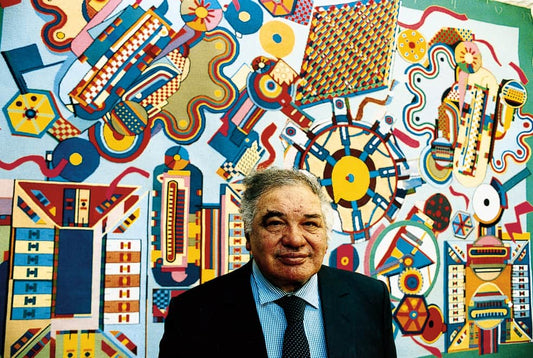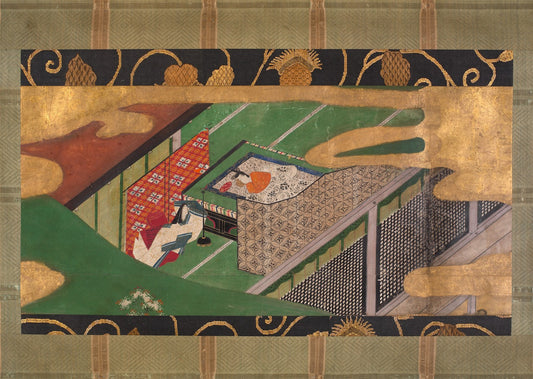Feature image: Oscar statues via Town and Country
The Creation of Oscar: How the Academy’s Golden Statuettes Became A Symbol of Artistic Success
Every year, celebrities, creators, artists, and influencers gather in one room to celebrate talented artists and acknowledge their accomplishments. Award season is opulent and grand—especially for the common folk. Aside from the sumptuous gowns, suits, and $85,000 after-party tickets, award shows hold a vital heritage that warrants the merit and honor of winning the award. Artists of all kinds deserve recognition and praise for their creations.

The Academy Awards, commonly known as the Oscars, will take place on March 10 at the Dolby Theatre in Los Angeles, where 24 lucky creatives will take home the gilded Oscar award. Hundreds of actors, producers, writers, makeup artists, and technicians will watch what the Academy deems to be the best films of 2023. To claim such a bold statement—saying something is the best of an entire year—requires credibility. So, what makes the Oscars so notable and iconic among the arts?
The Gilded Trophy’s Beginning
Every award show has a recognizable trophy without mentioning the show’s name. The Grammy Awards have the gramophone, The Emmy Awards have the woman carrying an atom, and the MTV Music Awards have the moon man. But what makes the Oscars’ trophy so significant is its history.
When the Academy was first established in 1927, the board needed to craft a trophy that symbolized artistic success. The Academy appointed Cedric Gibbons with the honor of designing the award. After numerous drafts, Gibbons finalized his design and ended with what we know today: a 13.5-inch tall knight gripping a sword with a film reel at his feet. The film reel’s five spokes represent the five pillars of the film industry: actors, directors, producers, writers, and technicians. Once the tedious designing was accepted by the Board of Directors, Gibbons needed to find someone talented enough to handle the monumental task of creating the physical trophy.

George Stanley is an American sculptor best known for co-creating the Oscar statuette and his fountain sculpture at the Hollywood Bowl, Muse of Music, Dance, Drama. In the late 1920s, Gibbons and Stanley used gold-plated solid bronze to craft the statuettes, later evolving to opt for Britannia metal. But a few years later, when WWII impacted every facet of society—economically, socially, and environmentally—the Academy decided to create the statuettes with plaster due to the metal shortage. Later, after the war, the Academy revisited those who were awarded plaster trophies and exchanged them with the hefty gold-plated solid bronze trophies.

Since WWII, The Academy has remained loyal to the Britannia metal. However, in 2016, The Academy resorted back to the original statuette materials, gold-plated solid bronze. The choice of manufacturers has evolved over time, but it has always remained in America. Oscar is cast and cooled in a 3D-printed mold in Rock Tavern, New York, and sent to Epner Technology in Brooklyn, New York, to receive the 24-karat gold coating. Overall, the process takes approximately three months.
Sculptures Outside of Award Shows
Like other art forms, sculptures’ size, shape, and process vary. While the Oscar statuettes are considered a sub-category of statues, they still are considered under the same umbrella as traditional statues. Large marble statues are commonly the first example one may think of. From The Thinker to The Statue of Liberty, statues can range from exquisite carvings to entire symbols of freedom. Precise and laborious carving formed some world-renowned statues like David of Michelangelo; works of art can take years to complete—a jarring time contrast to the three months it takes to make most trophies. Statues’ range in size, material, complexity, and meaning is what truly sets this medium aside from other art forms; some represent artistic excellence, while others represent a free world.

The Thinker by Auguste Rodin, modeled ca. 1880, cast ca. 1910. Photo from The Met Museum.

Awarding Awards
The Academy and many other organizations create these gilded trophies to honor and commend artistic talent. It is equally as important to applaud the creators of these awards. Gibbons and Stanley developed an icon of artistic success using a combination of bronze and gold (and plaster, but just for a moment).
The Academy Awards, airing March 10, 2024, will highlight the works of Oppenheimer, Barbie, Poor Things, The Color Purple, Napoleon, and many more. It is imperative we collectively continue to praise those in the arts and highlight how important the arts are in all cultures. The Oscar statuettes and all other iconic awards are not just a logo or symbol of the organization but a key contributor to the continuation of outstanding creation in the art industry.
©ArtRKL™️ LLC 2021-2024. All rights reserved. This material may not be published, broadcast, rewritten or redistributed. ArtRKL™️ and its underscore design indicate trademarks of ArtRKL™️ LLC and its subsidiaries.





